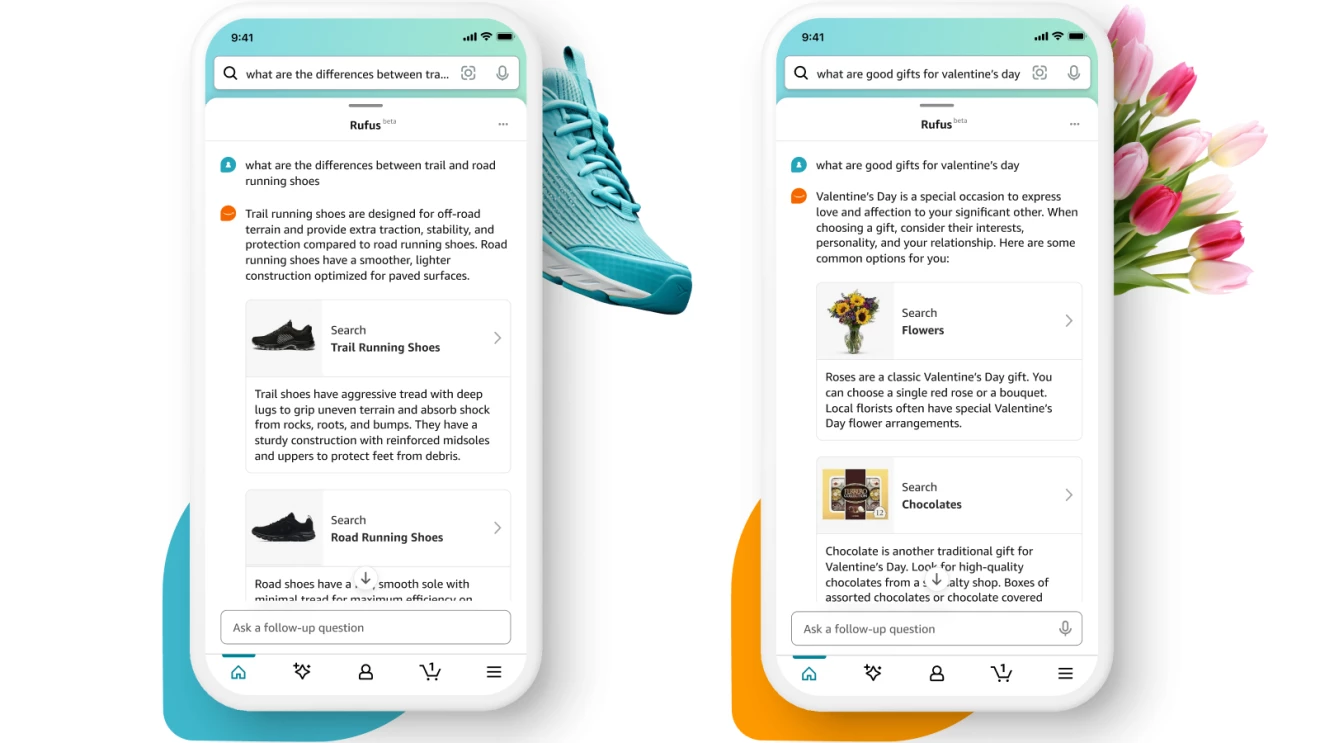Amazon has introduced Rufus, a new shopping assistant powered by advanced artificial intelligence.
Rufus is designed to enhance the customer experience by providing personalized recommendations and answering queries based on individual preferences.

During Amazon’s earnings call, CEO Andy Jassy highlighted Rufus as a significant improvement in customer discovery.
RufusAI can handle a variety of shopping-related questions, offering insights like the best golf ball for spin control or the top cold-weather rain jackets.
Additionally, Rufus can recommend best selling items on Amazon, ensuring customers find popular and highly rated products easily. Or, if you’re on the opposite end as a seller and researching top selling, rated, and trending products, Rufus can provide valuable insights to help you understand market trends and optimize your inventory
With access to vast product and customer data, Rufus delivers thoughtful explanations and tailored product recommendations.
Rufus AI utilizes Amazon’s vast product and customer data to provide informed explanations and suggestions, offering users a more intuitive and efficient shopping experience.
Rufus allows for engaging in conversations on a wide range of topics, whether they’re related or unrelated.
If you’re browsing through our product pages, Rufus can assist you by answering questions about various product features.
You can simply ask Rufus about any specific feature you’re interested in, and it will promptly provide you with relevant information.
Rufus was introduced on Thursday in beta, targeting a limited group of users within Amazon’s mobile app.
Amazon intends to gradually introduce Rufus to all its customers across the United States in the upcoming weeks.
As an Amazon Shopping app user, if you’re part of the beta or gain access to Rufus soon, here’s how it works: You can interact with Rufus by typing or speaking your questions directly into the search bar within the app.
Once you do that, a Rufus chat dialog box will pop up at the bottom of your screen, ready to assist you.
This feature aims to provide a seamless experience for users, making it easier to get quick answers or assistance while browsing or shopping on the app.
Users have the option to expand the chat feature to view responses to their inquiries, select from suggested questions, and pose follow-up questions within the dialogue box.
When customers are ready to exit the chat with Rufus and return to their regular search results, they can simply swipe down to minimize the chat box to the bottom of their screen.
According to Jassy, Rufus is still in its early stages, with plans for further personalization and expansion in the pipeline. There is anticipation surrounding how Rufus will enhance the discovery process on Amazon.
Jassy highlighted that Rufus offers a unique approach to item discovery compared to traditional e-commerce platforms, aiming to streamline the process and provide a more user-friendly experience.

Rajiv Mehta, Amazon’s VP of search and conversational shopping, along with Trishul Chilimbi, VP and distinguished scientist in Amazon’s stores foundational AI division, detailed in a post on the company’s website that Rufus underwent training using Amazon’s extensive product catalog, inclusive of customer reviews, community Q&As, and data sourced from across the web.
This comprehensive training equips Rufus with the ability to respond to various shopping inquiries, offer product comparisons, and deliver personalized recommendations based on ongoing conversations.
Mehta and Chilimbi emphasized that Rufus enhances the shopping experience by addressing a wide range of needs, from general research queries like ‘What to consider when buying running shoes?’ to comparative analyses such as ‘What are the differences between trail and road running shoes?’ to specific inquiries about durability.
They highlighted Rufus’s role in streamlining the customer journey, making it effortless for users to discover the most suitable products seamlessly integrated into their regular Amazon shopping experience.
Mehta and Chilimbi’s insights underscore the significance of Rufus in improving accessibility and convenience for customers seeking optimal product solutions across diverse shopping scenarios.
Related Stories:

